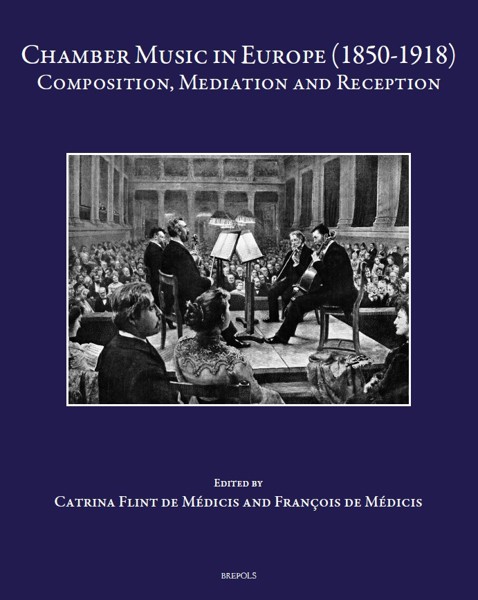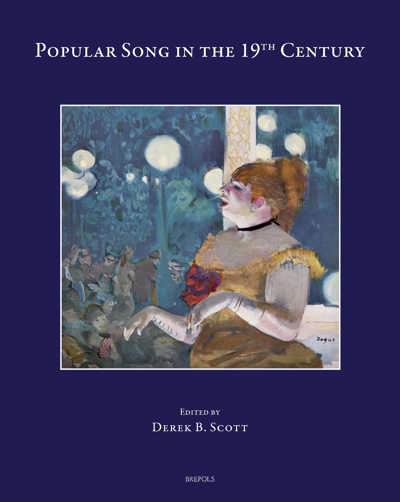
Music and the Figurative Arts in the Baroque Era
Florence Gétreau, Fulvia Morabito (eds)
- Pages: approx. 450 p.
- Size:210 x 270 mm
- Illustrations:178 b/w, 32 col.
- Language(s):English, Italian, French
- Publication Year:2026
- € 150,00 EXCL. VAT RETAIL PRICE
- ISBN: 978-2-503-62184-5
- Hardback
- Forthcoming (May/26)
*How to pre-order?
This book explores the relationship between music and the figurative arts in the xvii and xviii centuries in Italy, France, Germany, Spain and Austria.
Florence Gétreau is Director of Research Emeritus at the CNRS (Paris, Institut de recherche en musicologie). A musicologist and art historian, her research focuses on organology, musical iconography and the history of collections. A heritage curator until 2003 and project manager of the Musée de la Musique, she directed the Institut de recherche sur le patrimoine musical en France (2004-2013). She founded and edits the journal Musique-Images-Instruments (CNRS Éditions).
Fulvia Morabito, pianist and musicologist, is President of the National Edition of the Complete Works of Luigi Boccherini and currently Vice President of the Centro Studi Opera Omnia ‘Luigi Boccherini’ of Lucca. Appointed ‘Cultore della materia della Musica Barocca e Classica’ by the University of Pavia, her interest are focused particularly on the late Baroque and Classical period, with particular reference to the figures of Pietro Antonio Locatelli and Luigi Boccherini.
The figurative arts — or the arts that transcribe the visible — are interested in music in many ways. If we consider the hierarchy of genres, particularly formalised at the end of the 17th century with the advent of the academies, music is present in religious subjects, historical and mythological themes, the performing arts, genre scenes, portraits and still lifes. Artists offered musical motifs using a wide variety of techniques, including painting of course, but also the graphic arts (drawing, engraving) and the plastic arts (sculpture, objets d'art and textiles in particular). This multiplicity of themes, media and techniques gives us the opportunity to discover common or rarer musical instruments that can be remarkably observed, but also musical notations that are sometimes perfectly identifiable, particular playing techniques that refer to theoretical treatises or learning tutors, and musical ensembles appropriate to a wide variety of circumstances (religious rituals, festivals, urban or court entertainments, the performing arts, domestic practices). All these visual traces of music raise questions about the place of music among the other arts, and about its social and symbolic importance, since it suggests or even provokes the affirmation of a status, of a terrestrial or spiritual power, of an aesthetic or even philosophical choice. The contributions gathered here reflect this diversity during the seventeenth and eighteenth centuries in Italy, France, Germany, Spain and Austria.
Florence Gétreau and Fulvia Morabito, Preface
Spiritual Inspiration
Maria Luisa Baldassari, Chi era il maestro di Santa Cecilia? Dipinti di S. Cecilia e trattati tastieristici nel primo Barocco
Galliano Ciliberti, Un caso di «musica picta»: il mottetto «In te Domine spes mea» attribuito a Giacomo Carissimi
Gaëtan Naulleau, Le chœur polyphonique dans les planches illustrées du «Cæremoniale Episcoporum» (1600-1779) : caractéristiques, circulation et signification d’un thème iconographique
Scenography and Theatrical Art
Silvia Bier, «Le propre de ce spectacle …»: Early French Opera and the Idea of a Synthesis of Arts
Adriana De Feo, Pietro Pariati and Apostolo Zeno at the Viennese Court: Baroque Spectacle and the Representation of Power
Portraits of Musicians
Nicola Usula, Musica nei ritratti e ritratti nella musica: il caso di Leopoldo i Asburgo (1640-1705)
Florence Gétreau, The «Musical Assembly with Reincken, Buxtehude and Theile» Painted by Johannes Voorhout in 1674: Musicians, Instruments, Canon, Scenography and Interpretation
Vincent Robin, Quelques portraits de musettes et de musettistes aux XVIIe et XVIIIe siècles
Court Music Images
Florence Gétreau, Présence de la musique dans l’iconographie du salon de la Paix à Versailles : les peintures et les trophées des bas-reliefs de métal doré
Michael Latcham, «All the World’s a Stage»: Farinelli at the Royal Court of Spain, 1737 to 1760
Cristina Bordas, Visual Memory of Farinelli in 21st Century Madrid
Abstract and Biographies
Iconographic Appendix
Index of Names




